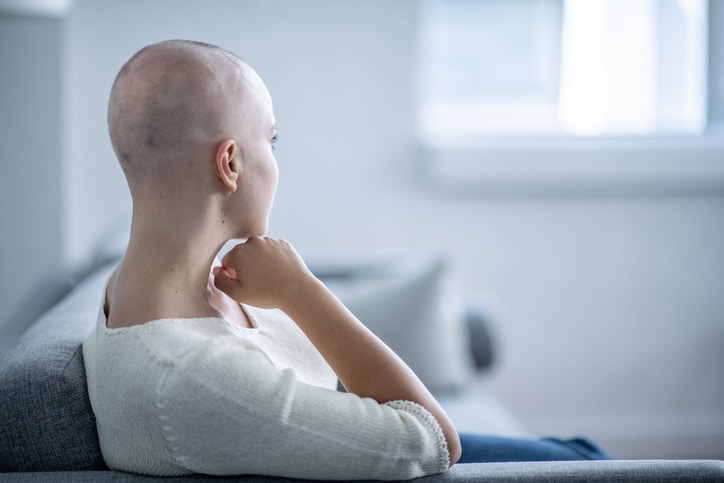What Is Alopecia and Can It Be Treated?
March 15, 2023 by Adam.lueken

Alopecia is an autoimmune disease that causes hair loss for both adults and children. This can occur on the scalp as well as on the body, such as eyebrows, eyelashes, and facial hair. With recent events, a spotlight has been shown on this widespread cause of hair loss. But what is this condition, who does it affect, and can it be treated?
Who is Affected by Alopecia?
It’s estimated that alopecia areata affects over 6.5 million people in the U.S. Often, those who have/had a blood relative with the disease have a greater chance of developing it. It usually begins during childhood and teenage years. However, it can start at any age and affects all races and genders.
Types of Alopecia
There are four types of alopecia you can be diagnosed with, based on the amount and distribution of hair loss:
- Alopecia areata: This is the most common type and is characterized by round patches of hair loss, mainly on the scalp.
- Alopecia totalis: Loss of all hair on the scalp.
- Alopecia universalis: Loss of all hair on the body (most rare type).
- Traction alopecia: Non-disease related, but hair loss caused by repeated pulling or putting tension on hair, such as wearing tight ponytails, buns, braids, etc.
Effects of Alopecia
Typically, those with alopecia are otherwise healthy and don’t develop other autoimmune diseases. However, having one autoimmune disease can increase the risk of developing another one. For example, alopecia can increase the risk of getting vitiligo, a condition that causes the skin to lose its color. Alopecia also increases the risk of developing allergic conditions like eczema, asthma or nasal allergies. Since alopecia areata doesn’t destroy hair follicles, hair will likely regrow. But this varies from case to case. Hair can also fall out again even if it does regrow. The cycle of hair loss and growth is unpredictable.
Diagnosing Alopecia
A board-certified dermatologist can often diagnose the disease by inspecting the areas with hair loss. Sometimes removing a few hairs for a biopsy (microscopic exam) may be necessary. Your scalp may also need to be examined with a dermatoscope. This can help provide a clear view of the hair follicles and assist in diagnosing.
Treatment Options for Alopecia
Often, hair will regrow without treatment, although it can be slow. And many don’t get the regrowth they want or expect. There are treatment options that can help with alopecia areata. Depending on the amount and areas of hair loss, treatment plans can include the following options.
Corticosteroids can help calm the immune system so it doesn’t attack hair follicles. When treating in adults, corticosteroids may be injected into the spots with hair loss. Several shots will be needed every four to six weeks. When successful, patients typically see hair regrowth within three months of the first injection. A corticosteroid cream may also be prescribed to apply daily to bare spots. Hair growth can start after three to four months after this treatment. A combination of topical and injectable corticosteroids has been shown to be effective.
- Minoxidil is a topical medication that comes in various strengths, with the 5% solution or foam being the most effective for alopecia areata. When successful, signs of hair growth usually start around 12 weeks.
- Anthralin is a tar-like substance that also calms the immune system. It can be rubbed daily on areas needing regrowth and left on the skin for 15-20 minutes. If successful, hair growth is usually seen in treated areas in three to four months.
- Topical Immunotherapy can be recommended for extreme hair loss and includes chemicals like squaric acid, dibutyl ester, or diphencyprone. When applied to the skin, these cause an allergic reaction that triggers the body to wake the hair follicles, which can result in hair regrowth. If successful, regrowth can take up to three to four months.
- Oral treatments may be recommended, including prednisone, methotrexate, cyclosporine or other immunomodulators. These can have side effects, so discuss with your dermatologist.
Other treatments for alopecia include hair transplant surgery, which involves taking hair from one part of the scalp and transplanting it to the balding areas. This option is usually recommended for those with alopecia totalis or universalis. Scalp micropigmentation is a non-invasive option that creates the appearance of hair follicles by tattooing the scalp. This is a cosmetic solution that can be helpful for those with hair loss who want to conceal it.
While there is currently no cure for alopecia, ongoing research is being done to better understand the disease and develop more effective treatments. The National Alopecia Areata Foundation is a nonprofit organization dedicated to funding research and providing support and education to those affected by alopecia.
It’s important for those with alopecia to take care of their mental health as well as their physical health. The emotional toll of hair loss can be significant, and it’s important to seek support from loved ones or mental health professionals if needed.
Talk With Your Dermatologist
It’s important for those with alopecia to consult with a board-certified dermatologist to discuss treatment options and take care of their mental health. Ongoing research is being done to better understand alopecia and develop more effective treatments, and organizations like the National Alopecia Areata Foundation provide support and resources to those affected by the disease.
If you would like to consult with a dermatologist about these issues or any issue related to the health and wellness of your skin, contact one of our dermatology professionals today.

